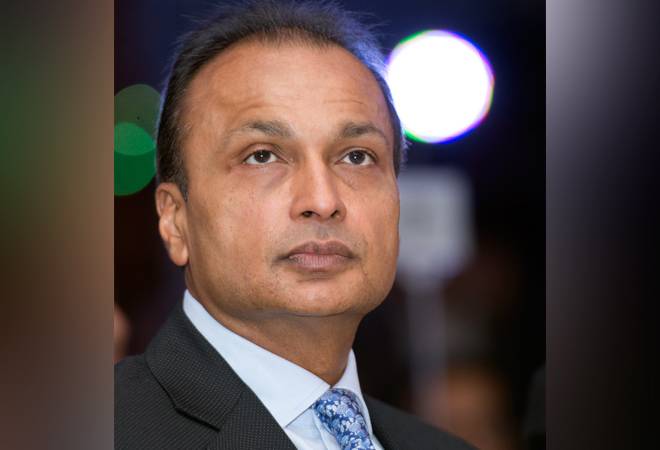When someone thinks of losing a lot of money, Anil Ambani comes to mind. But, how did it all happen. In this article, we decode the story and answer: How did Anil Ambani lose all his money?
Anil Ambani, once a billionaire and the sixth richest person in the world, has seen his fortunes dwindle in recent years. His story serves as a cautionary tale for entrepreneurs and investors alike, demonstrating the importance of prudent decision-making and financial management. This long-form blog post will delve into the factors that contributed to Ambani’s dramatic decline in wealth and his current financial predicament.
As the younger brother of Mukesh Ambani, the richest man in Asia, Anil Ambani was once a powerful business magnate in his own right. He held leadership positions in some of India’s largest companies, spanning industries such as telecommunications, energy, infrastructure, and finance. His personal wealth was estimated at $42 billion in 2008, but by 2021, his net worth had plummeted to virtually nothing.
While some of his financial woes can be attributed to the broader challenges facing India’s business landscape, much of Anil Ambani’s decline can be traced back to a series of missteps and poor decisions that he made over the years. As we explore these factors, it’s essential to keep in mind that this analysis is not meant to vilify Ambani but rather to provide insight into how even the most successful entrepreneurs can falter and face significant setbacks.
By understanding the key reasons behind Anil Ambani’s downfall, we can learn valuable lessons about the importance of strategic planning, financial discipline, and adaptability in the face of changing market conditions. In this post, we will examine 18 critical factors that contributed to Ambani’s financial decline and offer examples to illustrate each point.
Key Reasons why Anil Ambani Lost his money
- Overambitious Expansion: Anil Ambani pursued an aggressive growth strategy, which involved rapid expansion into various sectors, such as telecommunications, power, and infrastructure. This ambitious approach led to high capital expenditure and mounting debt, leaving his companies more vulnerable to market fluctuations.
- Inability to Compete: Ambani’s companies often struggled to compete with more established players in their respective industries. For instance, Reliance Communications failed to keep up with major telecom companies like Airtel, Vodafone, and Jio, resulting in massive losses and eventual bankruptcy.
- Poor Investment Choices: Many of Anil Ambani’s investments turned out to be ill-advised or poorly timed. For example, his foray into the entertainment industry through Reliance Entertainment did not yield the desired returns, given the intense competition in the sector.
- Lack of Diversification: While diversification is essential for mitigating risk, Ambani’s portfolio was highly concentrated in high-risk sectors, such as infrastructure and telecommunications. This lack of diversification made his businesses more susceptible to downturns in these industries.
- Mismanagement of Capital: Ambani’s companies often faced allegations of mismanagement and financial irregularities. For example, Reliance Infrastructure faced accusations of diverting funds meant for a Mumbai metro project to other group companies, resulting in delays and cost overruns.
- High Debt Levels: Anil Ambani’s companies consistently struggled with high levels of debt, making it difficult for them to access additional financing and meet their obligations. By 2021, his companies collectively owed over $12 billion to banks and other lenders.
- Declining Market Share: Many of Anil Ambani’s businesses saw a steady decline in market share, as competitors outperformed them in terms of innovation and customer satisfaction. For example, Reliance Communications’ market share in the telecom industry plummeted from 17% in 2010 to just 2% in 2019.
- Legal Disputes: Ambani’s companies faced several legal disputes and regulatory challenges, which not only damaged their reputations but also resulted in financial penalties and setbacks. One such case involved a dispute between Reliance Communications and Ericsson, which eventually led to Anil Ambani being held in contempt of court and narrowly avoiding imprisonment.
- Failure to Adapt: As markets evolved and consumer preferences shifted, Anil Ambani’s companies struggled to adapt to the changing landscape. For instance, Reliance Naval and Engineering failed to capitalize on opportunities in the defense sector, despite the Indian government’s push for increased domestic production.
- Poor Corporate Governance: Ambani’s businesses were often criticized for weak corporate governance structures, leading to a lack of transparency and accountability. This issue further eroded investor confidence and contributed to a decline in their stock prices.
- Rivalry with Mukesh Ambani: The sibling rivalry between Anil and Mukesh Ambani is well-documented, with the two brothers often competing against each other in various sectors. This competition led to duplication of efforts and resources, ultimately weakening Anil Ambani’s business prospects.
- Global Economic Crisis: The 2008 global financial crisis dealt a severe blow to many of Anil Ambani’s businesses, as demand for infrastructure and other capital-intensive projects declined sharply. This downturn further strained his companies’ already-precarious financial positions.
- Insufficient Risk Management: Ambani’s companies frequently pursued high-risk ventures without adequate risk management strategies in place. This lack of foresight and planning exposed them to significant financial and operational challenges.
- Overdependence on Debt Financing: As Anil Ambani’s businesses expanded rapidly, they relied heavily on debt financing to fund their growth. This overreliance on borrowing left them vulnerable to rising interest rates and tightening credit conditions.
- Failure to Retain Top Talent: Many of Anil Ambani’s companies suffered from a high rate of attrition, as key executives and employees left for better opportunities elsewhere. This exodus of talent further weakened their competitive position and ability to execute on their business plans.
- Weak Brand Image: While some of Anil Ambani’s companies initially enjoyed strong brand recognition, a series of setbacks and controversies led to a decline in their public image. This weakened brand equity made it more challenging for them to attract customers, partners, and investors.
- Overvalued Acquisitions: Ambani’s companies often overpaid for acquisitions, which put additional pressure on their balance sheets. One such example is the acquisition of Pipavav Defence and Offshore Engineering, which was later renamed Reliance Naval and Engineering, for a price that many analysts considered to be too high.
- Macroeconomic Factors: In addition to the company-specific issues outlined above, Anil Ambani’s businesses also faced headwinds from the broader Indian economy. Factors such as currency depreciation, inflation, and regulatory changes negatively impacted his companies, further exacerbating their financial difficulties.
Anil Ambani’s fall from grace serves as a stark reminder of the importance of prudent financial management, strategic planning, and adaptability in an ever-changing business environment. His story highlights the perils of overextending oneself, pursuing high-risk ventures without proper risk management, and neglecting the importance of strong corporate governance.
The key takeaways from Anil Ambani’s financial downfall can be applied to entrepreneurs and investors alike, as they navigate the complex world of business and investment. By learning from his mistakes, we can better position ourselves to weather market downturns, mitigate risk, and build sustainable, long-term wealth.
In conclusion, while Anil Ambani’s story is undoubtedly a cautionary tale, it also offers valuable lessons and insights into the challenges and pitfalls that even the most successful entrepreneurs can face. By understanding these factors and applying the lessons learned, we can strive to make more informed decisions and avoid similar pitfalls in our own business endeavors. As we navigate the complex world of entrepreneurship and investment, it is crucial to maintain a focus on long-term sustainability, strong corporate governance, and adaptability in the face of rapidly changing market conditions.
By internalizing these lessons, we can build more resilient businesses and investments, better equipped to withstand the inevitable challenges and fluctuations that the world of commerce presents. As the story of Anil Ambani demonstrates, even the most successful individuals can experience setbacks, but it is our ability to learn from these experiences and apply those lessons to our future decisions that ultimately determines our long-term success.
Did you know? Startups like to use our co-working space in Bangalore
Learn more about our coworking space on our YouTube channel Work Theater Studios where we talk about a variety of topics including personal finance, entrepreneurship, business and life.
Did you know? We also have a private theatre in Bangalore.




